Bob McTavish
Interview by Glenn Sakamoto
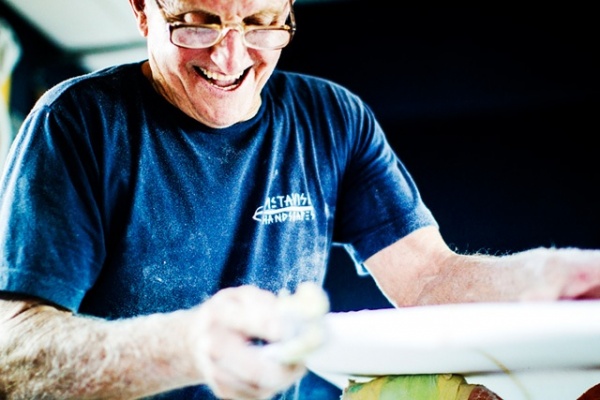
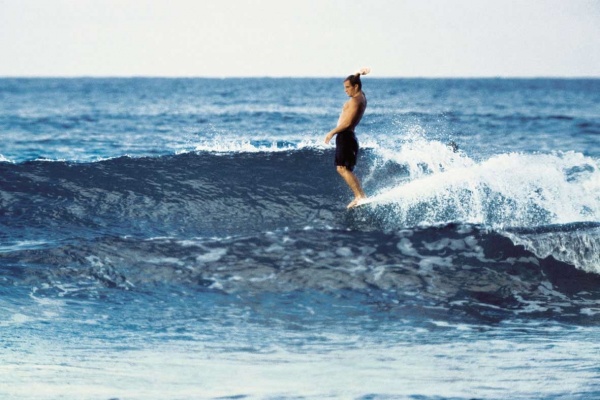
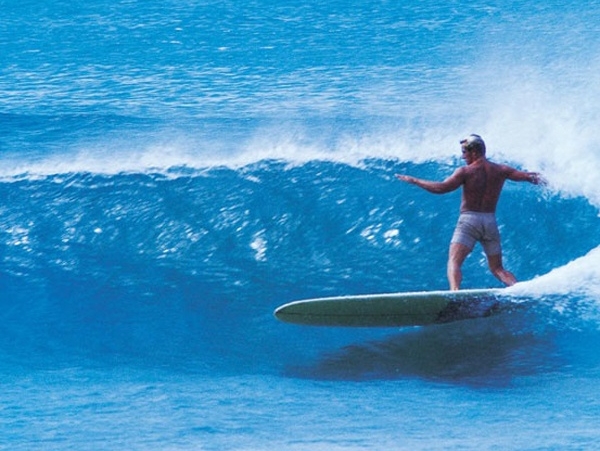
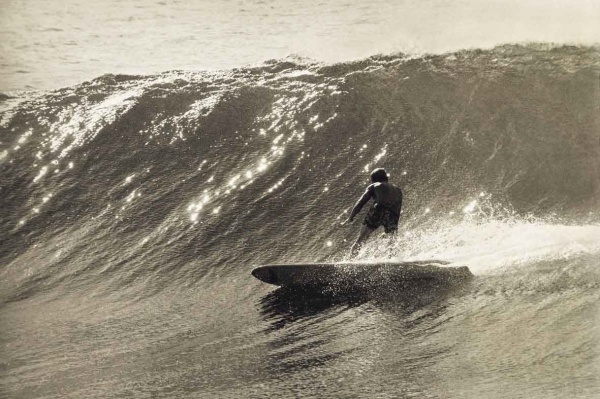
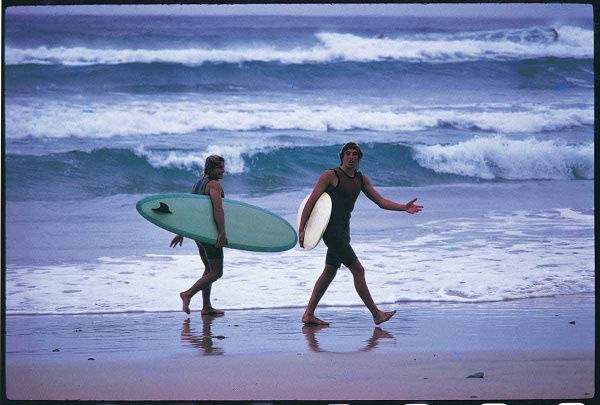
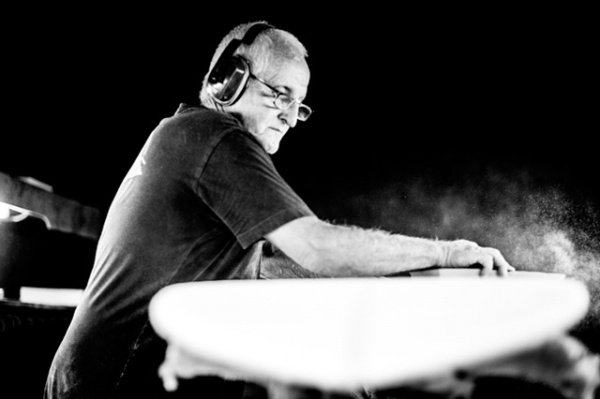
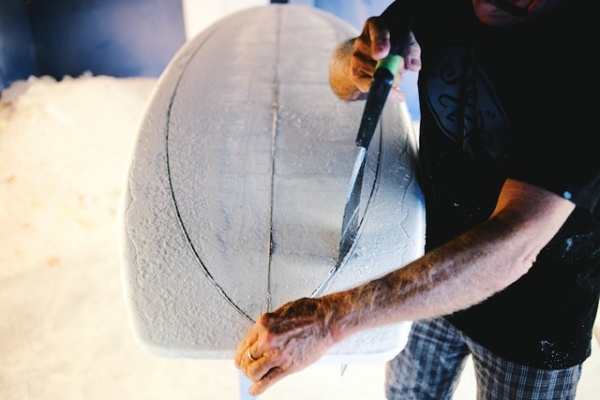
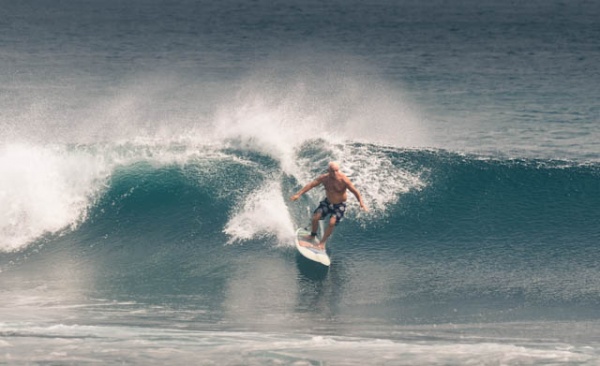
Bob McTavish is a legendary Australian surfer/shaper and a key figure of the Shortboard Revolution that exploded in the late Sixties. During this time, board lengths went from 10 feet to 7 feet literally overnight. Still effervescent and giddy at age 70, Bob is still stoked on surfing and surfboards. We spoke with Bob to learn about his influences and his outlook on design.
What was the feeling you had when you first stood up on a surfboard?
Ahahahoo! I was 12 and I’ve been bodysurfing until then and it was liberation! Just paddling the board out the back and being able to see the ocean beyond – not just the body surfing break. The first wave I caught, the board nose dived and washed all the way to the beach – a 16 foot plywood board. At the time I thought, “What a dog! I gotta do something better than this!” My first thought was, I gotta improve this thing! It was the glide and power that I wanted to harness and control. So I got some plywood and built a shorter board that was hollow and similar in shape to Tom Morey’s bodyboard and I started surfing that. Anything but that 16 footer!
Tell us more…
In about 1957, I rode a hollow plywood board about 10 feet long. It was my older brother Pete’s board. I already wanted boards to go better – right from day one. I made a balsa board when I was 14. I pulled the glass off and reshaped it to eight foot and then re-glassed it. It was my first real shape job and that was great. Then when I was 16, I got a foam and glass 6’6.” The only new board I ever bought.
Who were some of your heroes?
Well, much later as I learned surf history, Joe Quigg was one. He made his first surfboard, a redwood bodyboard in 1927 when he was 4 years old! (laughs) He worked on modern surfboards all the way into his seventies. He regretted getting old as he just couldn’t keep up the pace. I have great respect for him as he made beautiful shapes in the ‘40s and ‘50s. Like those solid redwood boards he made with George Downing. Both of them putting fins on boards and glassing them. They came up with beautiful templates and great rails. And Matt Kivlin, too. And Greg Noll did amazing boards in the Sixties.
Give us some background on how your vision of shorter boards evolved…
I did have a 6’6″ as my first polyurethane board in 1960. I bought it because I couldn’t afford a 9’6! There was this one 6’6″ in a collection of Gordon Woods surfboards, so at the age of 16, I bought it. I rode this board for about two and a half years. I was already riding a 6’6″ before I started shaping in ‘62. And when I started shaping, I made a whole lot of 6’6“s – maybe 30 or 40 of them. They were called Foley boards – named after Jim Foley from Santa Cruz because there was a picture of him in Surfer Magazine with a caption that read: “Jim Foley of Santa Cruz, a great surfer rides a little 6′ 6.” So we had a rash of Foley boards in Sydney in 1962.
Then Miki Dora caught our imagination. Of course there was also Phil Edwards, too. With Dora, we were worshipping every move he made through the movies and the magazines. I had just moved to Noosa and I wanted to surf like Dora – or take it further. Joey Cabell came to Australia for the first World Contest and his surfing was extremely impressive on a longboard. He surfed a thin 9 foot longboard, light with rounded rails with a nice rocker. So I got one of those boards even though I was a shaper. I was riding a Joey Cabell model that was made in Sydney. Actually I had won it in my first contest.
Tell us more…
So I had this combination of Miki Dora and Joey Cabell going in my head and I was surfing in Noosa. What are you going to do? You aren’t going to go shortboarding! You’re going to go trimming and going fast through the turns, pivoting and working close to the curl like Dora and Cabell did. As a result, we began shaping boards that were very lightweight and high performance with minimal stringers and thin round rails in the 9 foot range. By ‘66 we were using thin glass and sacrificing gloss coats. Nat (Young) came up and copied one – and went on to win the World Contest in ‘66 on one of those boards! We called it the Involvement School. Because we were involved with the curl. That was my first substantial design as a shaper.
Tell us how the Shortboard Revolution came about.
I had the vision or the mental picture of how to make the shortboard. I wasn’t just stumbling but I was determined to get there. There were a lot of people involved at the time, but I had the vision to make it come true. And it took two years – from mid 1967 to mid 1969 to really have a good shortboard going.
I literally had a dream of carving and shooting straight up the face and banking off the top. I said to myself, “That is what I’ve got to do.” This was in ‘67. And that is when I was determined to make the shortboard. I moved to Sydney, where the waves were steeper and more powerful. I was surrounded by a group of energetic, powerful surfers like Ted Spencer, Baddy Treloar, and Russell Hughes, and Kevin Platt. So we went from 9 foot to 8 foot very quickly. And then we went down to 7’6, but still with a full tail, full nose shapes and a vee bottom. That was all in a six month period.
Tell us about the Sunset Contest and Honolua Bay.
When we went to Hawaii in November ’67, I didn’t know what to take. Nat said we should bring bigger versions of our 7’6“s so we blew up a couple to 9 feet so that we could paddle into Sunset. That went notoriously bad, but after riding it a few days at Sunset I managed to carve some vertical action on it. I gave mine away straight away to some hippie in Maui.
Then I went in January to California and shaped at Reynold Yater’s shop and made myself a sweet 7’6 or 7’8. Carl Pope then offered me a deal at Morey Pope and that is what became The Tracker. I didn’t like the one Carl Pope marketed. Mine was a narrow tail with only slight vee and a pointed nose like a Brewer. But Carl said no, he wanted something more like the Plastic Machine board because that is what Australia was going through – blunt and full. That’s just what they wanted. My board was much more streamlined and refined. By mid ‘69 we discovered flat bottoms and down rails from Bunker Spreckels and Vinnie Bryan in Hawaii. Later that year, we began using a smaller, stiffer, upright dolphin Brewer fin.
Did you have any differences?
Hell yeah! The thing with George is that he swears that single fins are the only way to go. And it’s not right. I ride singles, I ride quads, I ride thrusters. Multiple fins under your toe and heel give you so much more added boost to get vertical and when you bank off the roof, and they accelerate on the way back down. They take you beyond the actual power line of the wave – whereas the single fin likes to cling to the natural power line. And this is okay for elegant, retro surfing – it’s beautiful. But if you want to go beyond that, beyond what the wave says, and to find that extra power – you need to add extra fins. George is simply brilliant at everything he does. But George has limits. And they are directly related to the fact that he doesn’t stand up on a surfboard.
What do you think about Displacement Hulls?
On a hull when you are on your knees, it’s okay to grab the rail and pull the sucker around. But when you are standing up and your center of gravity is higher, it’s harder to control a hull. If you watch Jimmy Gamboa in One California Day on a hull, the poor guy is struggling to make the waves and can barely keep up with the lip. This is because it is underpowered and gutless. I’ll put a slight rounded curve on some boards, but I will never use a hull design – they never work for a stand up surfer. The hull shape is a very slow shape – it isn’t crisp and they don’t plane very high. I’ve never really embraced the whole hull concept. I fooled around with it and never really got with it. My friends made straight copies of it – Ted Spencer, Russell Hughes, Chris Brock, Paul Witzig – they all just copied George’s hull and they put up with its problems.
Hulls are difficult to ride, but they do give you an occasional flash of brilliance because of their neutrality. At a certain point, after going through a series of arcs, you can lay it on that neutral rail and it won’t suck you under. Today’s modern surfboard rails and bottoms are so far advanced from the Greenough hull that it is just a retro dream. The hull worked when the surf was uncrowded and you could lock or thread a line down a long point break, by the sixth or eighth turn you could wind up bags of speed with this beautiful neutral rail. At that point you could put it into an extreme position upside down, briefly – that’s when they shine. After 1969, you needed a flat bottom and a pivotal back foot so you could maneuver around people and break your power line. By mid ‘69 I wanted nothing to do with hulls. I still don’t like them. Dreamy, but impractical.
Tell us about your shaping career.
I kept surfing and shaping hard and I never stopped. With every development along the way, I’ve tried to infuse them into my shapes. I learned a lot of principles through windsurfing too. I’ve got great respect for Geoff McCoy for narrowing the nose and huge respect for Al Merrick for making the modern shortboard. Merrick put all the elements together such as the right tail rocker, the double concave under the back foot, and the right nose rocker upfront. I have great respect for designers. They don’t get lost in a plethora of shapers. There are five thousand shapers in the world, but very few designers. Shapers copy what the designers create. I’m interested in the designers.
What is your personal definition of a designer?
A designer understands all the principles involved in making a surfboard work. He combines them to improve a concept or pulls them together to make a better surfboard. The designer solves a problem. It’s been 50 year process of solving problems and we’ve pretty much figured it out in the last 10 years – that boards are now non-problematic. Now that the retro thing is back, people want to reanalyze history – which is alright and I am right behind it. We rushed too quickly through some great design back then. Now we can re-analyze peacefully. I just got back from riding a single fin in the the Telos Islands and the board had soft rails in the tail. I did this so I can see what the kids are all talking about – I learned a lot in that week!
It’s hard especially when you spend your whole life trying to solve problems and the boards we were making back then were all problematic. But now, we have better noseriders than we had back in the ‘60s. And we have better singlefins than what we had in 1969. We tweaked the rockers and now we have them going far better. There may be a breakthrough there with the new single fins. We got some great young surfers on single fins and mid-lengths. Guys like Alex Knost – I enjoy watching his surfing very much as he is so spontaneous. But he’s riding very modern surfboards with intelligent rails and tail rockers. He markets them as retro, but there is a lot of modern stuff in there.
What about finless boards?
I do think those boards have brief flashes of brilliance which make them so enjoyable. My son Ben and I were watching a guy surfing a finless board today – and that’s good research time. We had some nice 6 foot surf and the finless guy was streaking at high speed across the face. But he couldn’t set up the inside section because he didn’t have the fins to put him in the precise spot of power. But watching him screaming across this wall was just fabulous! So as a designer, you look at the bottom of his board and he’s got channels galore. So he’s created all of these potential drag elements to provide some control. But you could replace all that rubbish, those difficult channels, with just a little tiny fin! A control point. Just like the pectorals of a fish. He would go just as fast and just as far, but be in far better control. Look! I just solved another design problem to make his finless board go better! (laughs).
Who are some of the younger generation surfers that you admire?
When you have been surfing for 60 years and shaping for 50, there are many wonderful surfers who have been along the way. Jose, Eddie, Jock, Nat, Skip, Simon, Curren, and Slater, of course. Guys like Alex Knost and Ryan Burch at the moment. Matt Chojnacki is one of the guys down here. The Noosa boys Harrison Roach. Matt Cuddihy. My sons Ben and Jesse. Both very clever, but modest about it.
The new crew have taken good design from the past and have given it a twist and I have been working and shaping with a lot of these guys. I’m doing a lot of things that I wouldn’t normally want to do as they are dragging out old boards and saying, “I want this bottom shape,” and I have to make it work! But I’m keeping my mind open and I’m happy to work with these guys. Who knows? Maybe we’ll come up with something better! We’re also playing with asymmetrics, deep-vee wide tails, and deep full length double concaves, and a tremendous variety of fin set-ups.
Why do you surf?
It’s incredibly refreshing. It stimulates your brain. It keeps you joined in with Creation – probably the first reason. You are just enjoying creation. It’s a miracle that we can play in this “funland.” The way that waves peel down the sand or reef– it’s a wonderful gift and I love to indulge in it.
What’s your favorite meal?
Fish tacos. And a cold beer.
You seem to have so much energy. Can you tell us where that comes from?
I was born that way! (laughs) That’s just the way I was made.
What are you most proud of? What are you most grateful for?
Being married for 43 years and having some lovely children and grandkids. That is definitely the biggest thing in my life – and my biggest accomplishment. Being alive on planet Earth, mate. And having the opportunity to live on. Getting to know the Creator and Creation better and better.
It was an honor and privilege to be able to interview you.
That’s very kind. But I’m just another surfer, man. I’m just a guy who’s just been doing this a long time.
To learn more about Bob McTavish and his surfboard shapes, visit McTavish Surfboards. Also, a newly released book titled “More Stoked” written by Bob McTavish and published by Harper Collins is now available for sale here.
Archival photography provided courtesy of John Witzig. His latest book of photographs “A Golden Age”is available in the US and can be purchased here. Bob McTavish photography by Deus Bali. Photograph of “younger generation” and Bob surfing by Ben Harper.
All images used in this interview are copyrighted by their respective owners and may not be used without written permission. All rights reserved.
